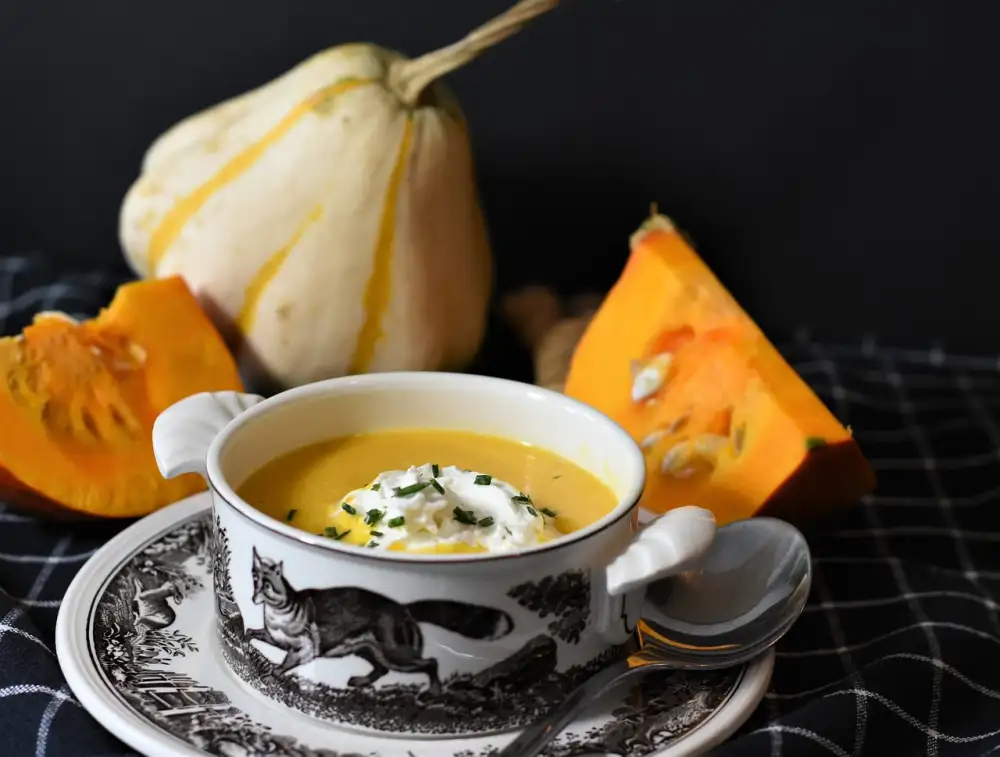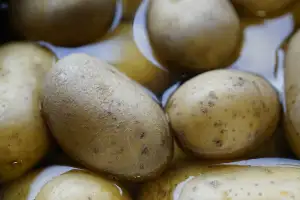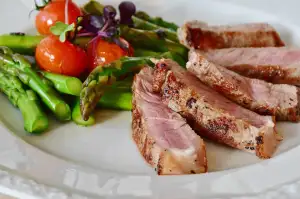Delight Your Taste Buds with a Hearty Clam Chowder: A Seafood Sensation for Food Lovers

- History and Origins of Clam Chowder
- Key Ingredients in Clam Chowder: Clams, Broth, and More
- Regional Variations of Clam Chowder: New England vs. Manhattan
- Traditional Preparation and Cooking Techniques
- Serving Suggestions and Pairings for Clam Chowder
- Health Benefits of Clam Chowder: Nutritional Profile
- Tips for Making the Perfect Clam Chowder at Home
- Where to Find the Best Clam Chowder: Top Restaurants and Destinations
Clam chowder, a classic seafood soup, is a beloved dish that has been satisfying taste buds for centuries. This hearty and flavorful soup is a symphony of flavors, combining tender clams with creamy broth and aromatic herbs. Whether enjoyed as a comforting meal on a chilly day or as an appetizer to whet the appetite, clam chowder never fails to delight food lovers. Join us on a culinary journey as we explore the history, ingredients, variations, and preparation techniques of this delectable seafood sensation.
History and Origins of Clam Chowder
Clam chowder, a classic seafood soup, has a rich history and fascinating origins. The dish is believed to have originated in the United States during the 18th century, specifically in the coastal regions of New England. It was initially enjoyed by fishermen and sailors who relied on clams as a readily available source of sustenance.
The exact origins of clam chowder are debated, with various theories suggesting influences from French, British, and Native American cuisines. Some believe that the dish was inspired by French fish stews like bouillabaisse, while others attribute its creation to British settlers who brought their own versions of seafood soups.
Regardless of its precise beginnings, clam chowder quickly gained popularity and became a staple in New England cuisine. Over time, it spread to other parts of the United States, each region putting its own unique spin on the recipe.
Today, clam chowder is celebrated as a beloved comfort food across America and beyond. Its roots in maritime culture and coastal communities make it an enduring symbol of seaside dining. Whether you prefer the creamy richness of New England-style or the tomato-based tanginess of Manhattan-style, clam chowder continues to captivate taste buds with its hearty flavors and storied past.
Key Ingredients in Clam Chowder: Clams, Broth, and More
When it comes to clam chowder, the key ingredients are what make this soup truly special. At the heart of every bowl is, of course, fresh clams. These briny bivalves lend a unique flavor and texture to the dish. Alongside the clams, a rich and flavorful broth is essential. Typically made with a combination of clam juice and fish or vegetable stock, the broth forms the base of the chowder. Other key ingredients include onions, potatoes, celery, and bacon for added depth and complexity. The combination of these ingredients creates a harmonious blend of flavors that is both comforting and satisfying.
Regional Variations of Clam Chowder: New England vs. Manhattan
When it comes to clam chowder, two distinct regional variations have captured the hearts and taste buds of seafood lovers: New England and Manhattan style.
New England clam chowder is known for its creamy and rich consistency. Made with fresh clams, potatoes, onions, and cream, this version is a comforting bowl of goodness that warms you from the inside out. The addition of bacon adds a smoky flavor that perfectly complements the sweetness of the clams.
On the other hand, Manhattan clam chowder takes a different approach. This tomato-based soup is vibrant and tangy, with a lighter broth compared to its New England counterpart. Packed with clams, tomatoes, celery, carrots, and herbs, it offers a refreshing twist on the classic dish.
Both versions have their loyal followers who swear by their preferred style. Whether you prefer the creamy indulgence of New England or the zesty kick of Manhattan, one thing is for certain - clam chowder is a seafood sensation that will leave you craving more.
Traditional Preparation and Cooking Techniques
Clam chowder is typically prepared by first sautéing onions, celery, and garlic in butter until they become fragrant and translucent. Then, flour is added to create a roux, which helps thicken the soup. Next, clam juice or fish stock is slowly poured into the pot, followed by diced potatoes. The mixture is brought to a simmer and cooked until the potatoes are tender.
Once the base is ready, fresh clams are added to the pot and cooked until they open. The clams are then removed from their shells and chopped before being returned to the chowder. To enhance the flavor, herbs such as thyme or bay leaves can be added.
To finish off the dish, heavy cream or milk is stirred in for richness and creaminess. The chowder is seasoned with salt, pepper, and sometimes a dash of hot sauce for an extra kick. It is important not to overcook the chowder after adding the dairy products to prevent curdling.
The traditional cooking technique ensures that all flavors meld together harmoniously while maintaining a creamy texture. This method has been passed down through generations, preserving the authenticity of this beloved seafood soup.
Serving Suggestions and Pairings for Clam Chowder
When it comes to serving clam chowder, there are a few suggestions and pairings that can enhance the flavors of this hearty soup. One classic option is to serve it in a bread bowl, where the warm and creamy chowder can be enjoyed alongside the crusty bread. The combination of the rich soup and the chewy bread creates a delightful contrast in textures.
For those who prefer a lighter accompaniment, a simple side salad with fresh greens and a tangy vinaigrette can provide a refreshing balance to the richness of the chowder. The crispness of the salad adds a nice crunch to each spoonful of soup.
Another popular pairing for clam chowder is oyster crackers. These small, crispy crackers are traditionally served on the side and can be crumbled into the soup to add some extra texture and flavor. They also make for a great snack on their own.
If you're looking to elevate your clam chowder experience, consider adding some garnishes such as chopped fresh parsley or scallions on top. These herbs not only add a pop of color but also bring some freshness to each bite.
Lastly, when it comes to beverages, many people enjoy pairing clam chowder with a glass of white wine or even a light beer. The acidity and effervescence of these drinks can help cleanse the palate between bites and complement the flavors of the seafood.
Ultimately, serving suggestions and pairings for clam chowder depend on personal preferences. Whether you choose to keep it simple with just a bread bowl or get creative with various toppings and accompaniments, one thing is certain - clam chowder is best enjoyed when savored slowly, allowing its delicious flavors to unfold with each spoonful.
Health Benefits of Clam Chowder: Nutritional Profile
Clam chowder not only satisfies your taste buds but also offers several health benefits. This seafood sensation is packed with essential nutrients, making it a nutritious choice. Clams, the star ingredient, are an excellent source of protein and low in fat. They provide iron, zinc, and vitamin B12, promoting red blood cell production and boosting energy levels. The broth base adds vitamins and minerals while being low in calories. However, be mindful of the cream-based versions as they can be higher in fat and calories. Enjoy this hearty soup guilt-free knowing that it nourishes your body as well.
Tips for Making the Perfect Clam Chowder at Home
1. Fresh is Best: Use fresh clams whenever possible for maximum flavor. If fresh clams are not available, opt for high-quality canned clams.
2. Don't Skimp on the Broth: The broth is the heart of clam chowder, so make sure to use a flavorful base like clam juice or fish stock. Avoid using water as it will dilute the taste.
3. Sauté the Aromatics: To enhance the flavors, sauté onions, celery, and garlic in butter until they become fragrant and translucent before adding them to the chowder.
4. Thicken with Roux: Create a roux by melting butter and whisking in flour until it forms a smooth paste. This will give your chowder a creamy consistency without being too heavy.
5. Add Potatoes at the Right Time: To prevent mushy potatoes, add them to the chowder once it has come to a simmer and cook until they are tender but still hold their shape.
6. Simmer Gently: Avoid boiling your chowder as it can cause separation or curdling of ingredients. Instead, simmer it gently over low heat to allow all the flavors to meld together.
7. Season Wisely: Taste your chowder before adding salt as clams can vary in saltiness. Add freshly ground black pepper and herbs like thyme or bay leaves for extra depth of flavor.
8. Garnish with Care: Top your clam chowder with crispy bacon bits, chopped fresh parsley, or oyster crackers for added texture and visual appeal.
9. Let it Rest: Allow your clam chowder to rest for at least 15 minutes before serving to allow the flavors to fully develop and meld together.
10. Enjoy Freshly Made: Clam chowder is best enjoyed immediately after cooking. Reheating can cause the flavors to become muted, so make just enough for one serving or refrigerate leftovers promptly.
Where to Find the Best Clam Chowder: Top Restaurants and Destinations
When it comes to finding the best clam chowder, there are a few destinations that stand out. In New England, you can't go wrong with Boston's Union Oyster House or Legal Sea Foods. Both establishments have been serving up delicious clam chowder for decades. If you find yourself on the West Coast, head to San Francisco and try the famous clam chowder in a sourdough bread bowl at Fisherman's Wharf. Another great spot is Pike Place Chowder in Seattle, known for their award-winning chowders made with fresh local ingredients. No matter where you go, these top restaurants and destinations are sure to satisfy your craving for a hearty bowl of clam chowder.
In conclusion, clam chowder is a classic seafood soup that has stood the test of time. With its rich and savory flavors, it is a true delight for food lovers. Whether you prefer the creamy New England style or the tomato-based Manhattan version, there is a clam chowder to suit every palate.
The history and origins of clam chowder add to its allure, while the key ingredients such as clams, broth, and vegetables create a symphony of flavors in every bite. The traditional preparation and cooking techniques ensure that each bowl is bursting with freshness and taste.
Not only does clam chowder satisfy your taste buds, but it also offers health benefits. Packed with nutrients like protein, vitamins, and minerals, it can be a nourishing addition to your diet.
If you're feeling inspired to make your own clam chowder at home, follow our tips for the perfect result. And if you're looking to experience the best clam chowder out there, check out our recommendations for top restaurants and destinations.
So go ahead and indulge in this seafood sensation. Treat yourself to a hearty bowl of clam chowder and let its flavors transport you to coastal shores. It's an experience that will truly delight your taste buds!
Published: 07. 12. 2023
Category: Food



